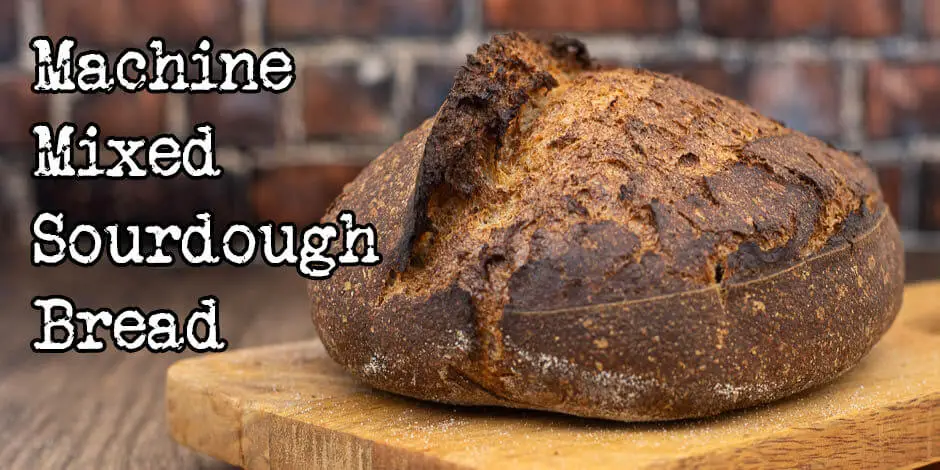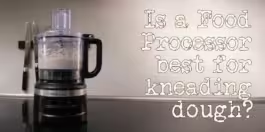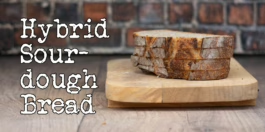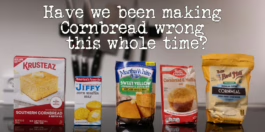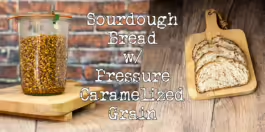So you love the taste, feel, smell, and texture of homemade sourdough bread, but you just think it’s too complicated? Autolyse, kneading, folding, and a whole bunch of other things. Well, here comes the Foodgeek to the rescue. This is my recipe for stand mixer sourdough bread.
So these last couple of years, sourdough bread has been all the craze. People love to eat them, but there’s a growing interest in making them yourself.
The problem is that most recipes are more complicated, mine included.
For the person that wants fantastic bread with a minimal amount of effort, I’ve developed this method that only requires you to mix the dough, ferment it, shape it and then bake it.
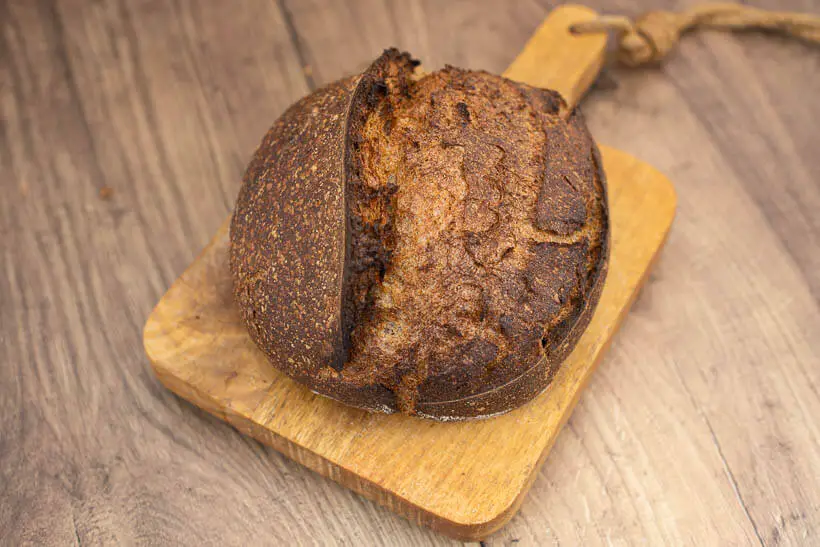
If you are just here for the recipe, you can press the button underneath to be automagically transported to the recipe:
Jump to Recipe Jump to VideoThe dough in this sourdough bread stand mixer recipe
Vitals
| Total weight | 1400 grams |
| Pre-fermented flour | 9.1% |
| Hydration | 75.0% |
| Yield | 2 small loaves |
The dough
The dough is a pretty standard dough for sourdough bread. What differs here is mainly the method.
The flour is 80% high-protein bread flour and 20% whole-grain rye flour.
The hydration is 75%. That’s a bit higher than some flours can take, so in the method, I give you the numbers to make it 70%.
If it’s the first time you make this bread or the first time you use the flour you are using, start at 70% and if it seems dry, work your way up.

The inoculation, which means the amount of starter compared to the amount of flour, is 20%. This is a good amount for fermenting at room temperature. 22-24°C/72-75°F. If your room is a lot colder, increase this percentage. If your room is a lot warmer, lower this percentage.
You can use my bread calculator to change the inoculation.
The salt is 2%. This does seem like a lot of salt, but remember this is for the entire bread, so each slice won’t have very much salt in it.
| Weight | Ingredient | Baker's Percentage |
|---|---|---|
| 576g | bread flour | 80% |
| 144g | whole grain rye flour | 20% |
| 522g | water | 72.5% |
| 144g | starter (100% hydration) | 20% |
| 14g | salt | 1.9% |
If you want to change the quantity, the size, the hydration, or the inoculation, it can be done here in my Bread Calculator.
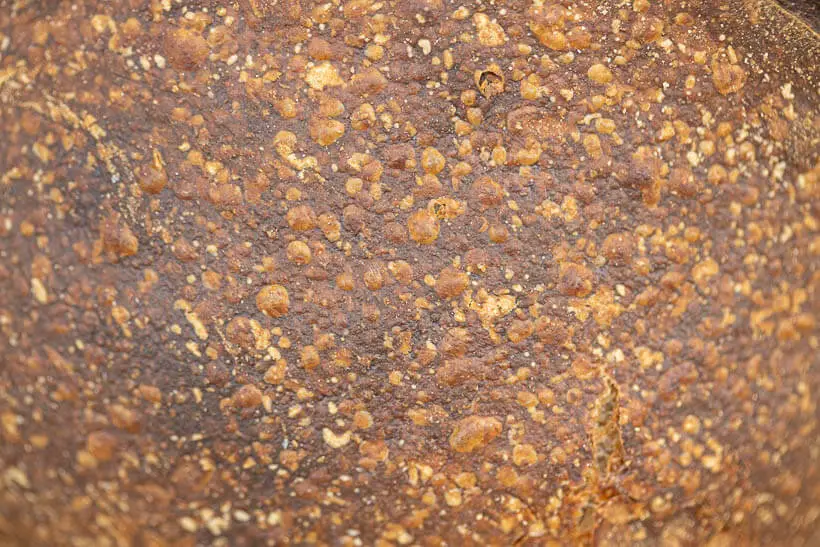
The conclusion for this stand mixer sourdough bread recipe
So, there is no doubt that this method makes it a lot easier to make sourdough bread.
The gluten development that you get from mixing your dough on a machine is also very, very good.
It takes a lot of manual labor to get the same amount of gluten development when kneading or folding. Great gluten development is one of the essential factors in getting a great oven spring.
Taste-wise, it’s super delicious. I love the taste that rye gives when mixed with wheat. If you have another whole grain you adore, you can substitute the rye.
The crust is super crispy, and the crumb is gorgeous and open. I don’t know what more I’d want from bread.
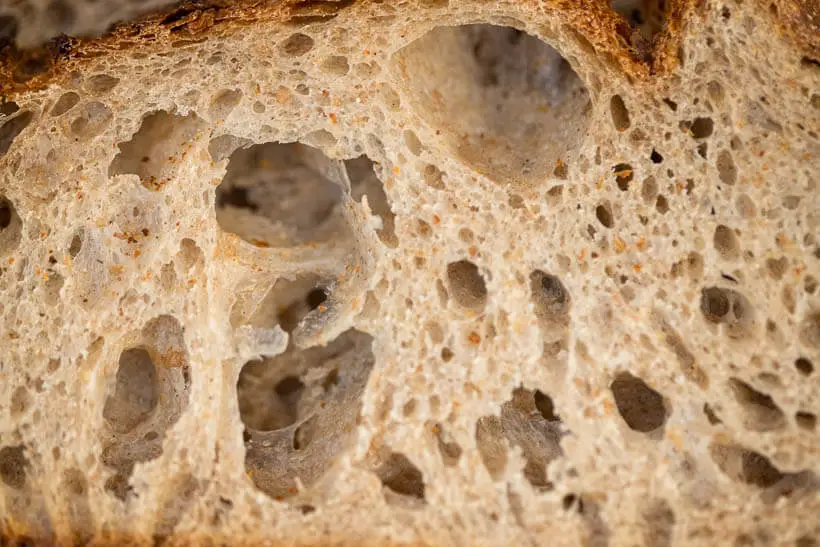
Please share this recipe for this stand mixer sourdough bread recipe
This is my recipe for sourdough bread made in a stand mixer. If you like the recipe, please consider sharing it with like-minded bread lovers on social media.
If you make it and post it on Instagram, please tag me as @foodgeek.dk so I can see it. That would make me very happy.
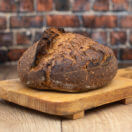
Machine Mixed Sourdough Bread
Ingredients
- 576 g bread flour
- 144 g dark rye flour
- 522 g water, divided room temperature
- 144 g sourdough starter
- 14 g salt
Instructions
Mix the dough
- To the bowl of your stand mixer add: 576g bread flour, 144g rye flour, and 14g fine salt
- Mix with the paddle attachment until all everything has been mixed together
- Then add 144g sourdough starter that has grown to its peak.
- Then add 482g room temperature water for 70% hydration.
- Mix the dough until it comes together. If you feel like the dough is too dry, add up to 40g water to get to 75% hydration.
- Switch the paddle for the dough hook.
- Mix for about 5 minutes. The dough should start to let go of the sides of the bowl, but if it doesn't stop after 5 minutes. I used speed three on my KitchenAid Artisan XL mixer.
- Then test the dough for a windowpane. If it doesn’t occur first, mix 2 more minutes and then check again. Repeat until you get a good windowpane.
Ferment the dough
- Then put your dough in a see-through bulking container. Level the top of the dough. Put a line on the container with a whiteboard marker. Cover it and put it somewhere warm.
- I use my proofer set to 30°C/86°F. Let the dough grow by about 25%. It took about 3 hours, but please only use that as a guideline. The volumetric growth is what is important.
Shape the dough
- Then divide the dough into two and pre-shape them. Watch the video to see how it's done.
- After the pre-shaping, let the dough rest on the counter for 20 minutes.
- When the 20 minutes are up, do the final shaping. I shape one as a boule and one as a batard. Also, watch the video to see how to do the final shaping.
- Once they are shaped, put them into bannetons.
Retard the dough
- Put the loaves in the fridge for the retard, a final cold-proof.
- Let them rest for at least 8 hours and up to 48 hours.
Bake the dough
- When ready to bake, heat your oven to 260°C/500°F with a baking steel/baking stone and a dutch oven inside.
- Once the oven has heated for about an hour, I grab one of the doughs from the fridge.
- Dust the bottom of the dough with rice flour so it can easily slide off the peel when you put it in the oven.
- Then flip the dough onto the peel. Score the dough with a razor blade attached to a lame.
- Grab the peel with the dough and put the dough inside the scorching hot dutch oven, and bake for 20 minutes.
- When the 20 minutes are up, remove the lid of the dutch oven and reveal the bread.
- Then I turn down the oven to 230°C/450°F and bake for another 20 minutes. I may take the bread out a bit earlier, depending on how it’s looking.
- When it’s finished, grab the bread and put it on a wire rack to let it cool.
- Then turn the oven back up to 260°C/500°F and bake the other bread.
- Let them cool completely before cutting into it, or else your bread may stale more quickly.



